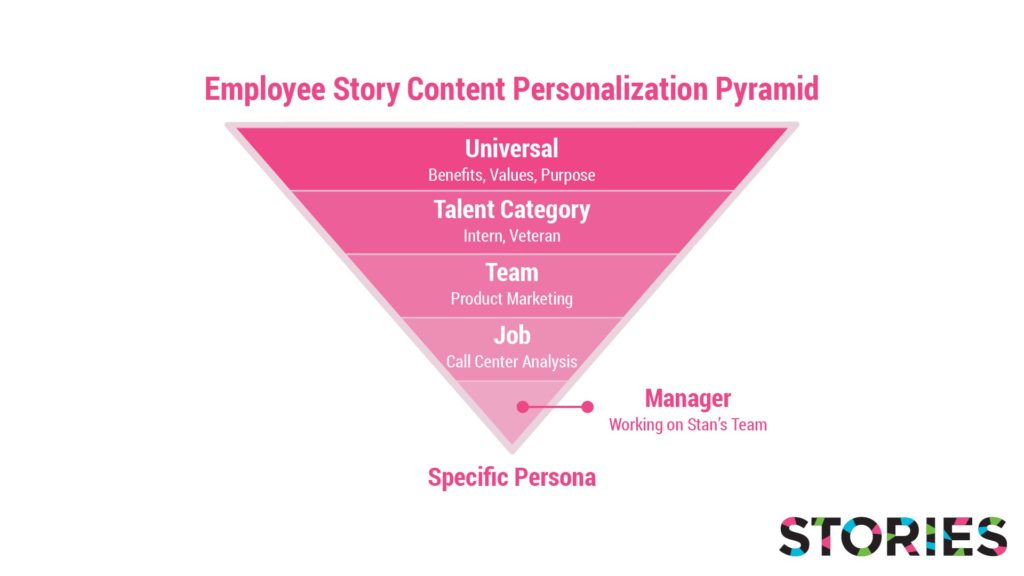Employees are looking for new jobs: how to best communicate your culture during the talent tsunami
The “talent tsunami” is here. Anywhere from 20-50 percent of employees are looking for new jobs or are planning to quit once the pandemic is behind us, experts estimate.* (The largest study, Edelman Data x Intelligence’s Work Trend Index survey, has this number at 40 percent.)
According to a recent study by McKinsey, more than 15 million US workers have quit their jobs since April 2021.
So, what does this mean for you, as someone responsible for attracting talent to your organization?
We know you’re feeling the stress of of the “talent tsunami” or “mass exodus.” But, this is also an opportunity for you. Now is the time to speak directly to (and convert) candidates who are leaving one company because they need exactly what your company offers.
The Great Resignation is a recruitment opportunity
Now is the time to speak directly to (and convert) candidates who are leaving because they need exactly what you offer.
Here’s your order of business:
- Use the data to understand why candidates are leaving their current job and employer RIGHT NOW. This is a special time: there are reasons people are leaving that are different from usual turnover.
- Align candidate pain points with where your company culturally excels.
- Create content that best communicates these themes to candidates using real employee experiences as proof.
- Unleash your messaging.
Why do employees want to leave?
There are reasons employees are leaving en masse that can be attributed to the pandemic and return-to-work (flexibility, skill set changes, burnout, connection to the culture).
There are reasons why it’s different today: McKinsey’s study talks about how candidates are willing to leave without another job lined up. For many, staying at a workplace just because it’s close to home is no longer a major consideration, since so many companies now allow you to work from home.
Yes, there are also reasons employees are planning to leave that aren’t different from the top reasons for turnover in any given point in time (career advancement, desire for a higher salary, etc).And those reasons are also contributing to a mass exit, because our historically low quit rates during the pandemic have pent up what would have been natural turnover.
But, the majority of respondents in the McKinsey study said they were quitting over lack of employee recognition and appreciation (54%), followed by not feeling valued by their organization (52 percent) or because they didn’t feel a sense of belonging at work (51 percent).
So it’s really a perfect storm of reasons employees are compelled to leave their current employers.
According to the research we’ve read recently, here are the top reasons employees are looking for new opportunities, and how offer them a reason to join your company.
1. Belonging at Work
The McKinsey study showed that those who classified themselves as non-White or multiracial were more likely than their White counterparts to say they had left because they didn’t feel they belonged at their companies.
How to communicate inclusivity and belonging at work
This is some real culture work that can’t be dressed up or glossed over with marketing content. But, this work is so important that you must talk about what you’re doing to create a culture of belonging to all of your stakeholders, especially candidates.
And while every organization is on a journey to build more diverse and inclusive cultures, you do not want to over-sell or inflate your efforts here. Being honest with candidates about where you’re working to improve, proved by stories from those leading the change and benefitting from it, is one best practice to build trust with candidates.
What’s important here is to create content that gives space to individuals to tell both personal and professional stories. How your organization has improved the lives of individuals and groups of individuals by understanding and supporting their unique challenges is essential employee storytelling.
You’ll want to create content that weaves together several stories, to show your culture of belonging is pervasive, like in this video:
…. as well as individual shorts so candidates can hear meaningfully from those like themselves.
2. Flexibility and Support
How will your company supports its team members with children, when the unexpected happens? Remember, many of them will be coming off of a year-and-a-half of working full time without childcare and while managing virtual learning.
A story like this from 11 Peppers shows proof of a company that is supportive of working parents.
3. Employee Recognition and Appreciation
69% of employees in another survey said that better rewards and recognition would encourage them to stay. If this is something your company excels in, push your programs forward so candidates understand there’s a systematic way to reward and recognize, as well as a general culture of genuine appreciation and gratefulness.
How to recognize and appreciate employees through storytelling
This is a recruitment marketing secret weapon: when you elevate the employee storytelling experience, you are serving both employee recognition by way of the process, and recruitment marketing by way of the finished product. Highlighting the achievements of others publicly also speaks volumes to candidates. You can recognize both teams and individual achievements through employee storytelling.
4. Career Advancement
According to Prudential’s Pulse of the American Worker Survey, 80 percent of employees getting ready to leave are concerned about their career advancement.
How to show internal mobility in your workplace
AstraZeneca Vice President Kiersten shares how her supervisor encouraged her to apply for a position bigger than what she had envisioned for herself. This story communicates internal mobility at its best: when leadership also cares about your career growth.
5. Skill Set and Career Changes
72 percent of participants in the same study say the pandemic caused them to rethink their skill sets. More than half of potential job-hoppers have sought out new training and skills during the pandemic, possibly to prepare to change careers in the next few months.
How to show your commitment to talent development
Give candidates proof that they’ll expand their skills by showing them team members’ stories of training and professional development. Here, Ochsner Health System nurses share their types of training they’ve received to bolster their careers.
6. Burnout
According to a survey by Eagle Hill Consulting and Ipsos*, one in four U.S. employees plan to leave their employer as the COVID-19 pandemic subsides.
And, that number is even higher for millennials and employees with children at home in remote learning situations. For those groups, one in three plan toone in three plan to quit once the pandemic is over.
The majority of all respondents in this survey who said they plan to quit this job this year said they were burned out.
Combating burnout: Wellness at work
Create this content in direct response to those that are quitting their jobs because they are simply burned out. Show that your workplace takes wellness seriously, and its initiatives actually help your employees.
For example, LinkedIn gave all of its 15,900 employees a week off to recharge after a year of working in the pandemic. They branded this week #RestUp and stories from employees sharing how they spent the week flooded social channels.
Interested in capturing stories from your team members?
7. Hybrid options
42 percent of current remote workers in the Prudential survey said that if their current company does not continue to offer remote work options long term, they will look for a job at a company that does. Among all workers surveyed, 68 percent believe a hybrid workplace model is ideal.
How to showcase a hybrid workplace
If workplaces are absolute in one approach — all remote or all at the office — they will lose talent. But if your company offers hybrid options or “employee’s choice,” you can capture more of the audience who will start their search if their work location preference isn’t met. Here, First Solar communicates its hybrid work options from the voices of its remote and on-site team members.
8. Culture connection
46 percent of the Eagle Hill Consulting respondents feel less connected to their company in the COVID landscape. 42 percent say that company culture has diminished since the start of their pandemic.
How to show a cohesive culture
No matter where your employees are working, it’s possible for them to be an active part within a connected culture. These stories bring Philips’ culture to life, and were captured from team members around the globe and filmed via virtual story session.
9. Compensation
The topic of compensation shouldn’t be the only content you have about working at your company. But if your sales team is thriving within an incentive structure you know is better than your competitors, at least one of your content pieces should address it.
We like this from ADP.
(Credit: ADP’s Global Employer Brand & Marketing team partnered with Isaac Mark, ADP’s VP of Creative Services, Davis Images for Production and Timeline Video for all post-production and editorial.)
The Common Denominator
If you’re a fan of this blog (sign up here!), you know what’s coming. It’s not enough that you offer things like flexibility at work, or have best-in-class wellness initiatives.
Candidates need to hear the impact of your policies by way of real stories from people like them.
Want to capture stories & bring your culture to life?
Launch your messaging
Your culture and employee experience has undoubtedly changed this year.
Now, you’ve got great content candidates need to see, hear and read. Optimize each content piece for all your candidate-facing channels.
Start with your career site. You’ve got content holes: fill them with all the substantive content you just created about your culture. These content assets reflect the state of your current employee experience. Employee stories are badly needed on the hub of all candidate comms, your home base.
Now, candidates can understand all that you offer against their current motivations and pain points. All of the content topics above can give candidates insight in both broad, organizational cultural and pain point topics down to those at the job (day in the life) or personal level (will I fit in with my boss/team?).

Next step: modify and use your awesome content on social to drive awareness and then traffic to your career site. We’ve written a great guide here to get you started.
Hey, we know it’s tough out there. But with every challenge comes great opportunity, and there is talent out there ready for you to swoop. By understanding where you can best capture candidates who are looking for what you can offer, you can take also take advantage of the great talent swap.
Get started capturing stories to maximize this momentum
Want to learn more about how we can help you capture these stories in your organization?
Contact us or book time right on our calendar.
Sources:
McKinsey: Making the Great Attrition the Great Attraction
Edelman Data x Intelligence, The Work Trend Index Survey
Prudential’s Pulse of the American Worker Survey: Is This Working?
2020 Eagle Hill Consulting COVID-19 Employee Burnout Survey
Turnover ‘Tsunami’ Expected Once Pandemic Ends

